- The imm cologne Trendboard names the Interior Trends for 2011: “Emotional Austerity”, “Surprising Empathy”, “Re-Balancing” and “Transforming Perspectives"
- Sustainability of forms and products is an ever-present theme
- Great longing for quality as the basis for something new
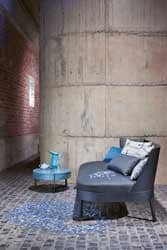
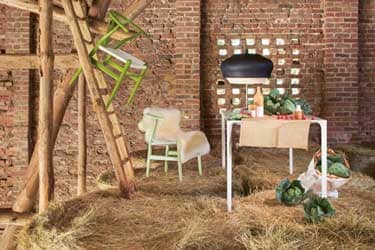
Picture Above: Emotional Austerity & Re-Balancing
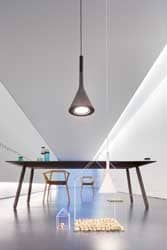
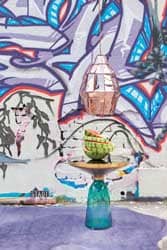
Picture Above: Surprising Empathy, Transforming Perspectives
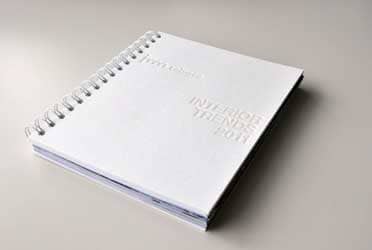
72 page Trend Book 2011
The way we design our home environment is increasingly becoming a question of our life plan. A chair is no longer just something to sit on but a statement: sometimes it is merely a utility object, sometimes an ecological footprint and sometimes a piece of art. Its quality is no longer purely a question of workmanship, but of where the materials come from, the tradition behind its form, its innovative added value.
It has to do with quality of life – something which, having just about got through the crisis of the last two years, we must now redefine. A product’s sustainability will play a crucial role in that, agreed the members of the Trendboard when it came to naming the most important trends in interior design. In all four Interior Trends – “Emotional Austerity”, “Surprising Empathy”, “Re-Balancing” and “Transforming Perspectives” – sustainability and quality are the fixed points around which the very different design approaches revolve. When it comes to form, designers and consumers alike are indulging their desire for new configurations: old forms are being equipped with new functions, materials mixed, techniques combined, boxes converted into furniture modules, furniture reconstructed. The cards are being reshuffled.
If the designers of the imm cologne Trendboard are to be believed, the furnishing world will be presenting a rather more modest face in future – at least outwardly. For it is increasingly the inner values that really matter. The good feeling of responsible consumption, scope for adapting the furniture to individual needs, the bringing together of various technical applications in a meaningful product and dreams of immateriality are the concepts furniture and interior designers are proposing for the future. They reveal visions of a positive future, show people the way to a clear conscience and equip them with a wealth of familiar but thoroughly upgraded utensils and faithful companions for reordering their world in the wake of recent catastrophes. The normal, tried-and-tested objects in our everyday lives are becoming the objects of preference for designers, who are reducing their forms to the essentials or enhancing them with new technologies.
Although the forms of the furniture sometimes look decidedly severe, their lightness of colour and material nevertheless creates a cosy look. Spectacular experiments with form are no longer uppermost – in view of the recent mood of crisis, the protagonists of a certain scene that interprets design as an event are regrouping and attempting to express their freshly gained perspectives on nature, the world of forms and the eco movement in simplifying images.
This sketch cannot of course claim to represent the entire spectrum of the furnishing industry – in the interior design sector too, the days when there was just one dominant trend are long gone. Today the tone is set by a variety of very different, parallel developments and a correspondingly varied range of styles. The five design experts on this year’s Trendboard even see signs that the individualisation of mass production is likely to progress even further. At the same time, some of the paths being pursued lead in opposite directions. Whilst the classic premium milieu is exploiting the possibilities offered by a sophisticated information and production system to obtain products that are as unique as possible, consumers with a more family and harmony-oriented lifestyle are seeking to assert their independence from aesthetic and material dictates by opting for do-it-yourself furniture, heterogeneous arrangements and adventurous mixtures.
The imm cologne Trend Book
A Reference Work for the Future
For the last seven years, the imm cologne has been convening an international panel of experts to identify the central themes for the interior design of the coming season: the Trendboard, with an annually changing line-up that brings together some of the world’s most influential designers, architects, specialist journalists and materials experts. This year designers Patricia Urquiola (Milan), Defne Koz (Chicago/ Milan/Ankara) and Harald Gründl (EOOS, Vienna) met with textile designer Martin Leuthold (Jakob Schlaepfer, St. Gallen) and editor-in-chief Marco Velardi (“apartamento” magazine, Milan/Barcelona). During a two-day workshop organised by the German Design Council, the panel compares and discusses the impressions of current tendencies in design and society its members have collected in the preceding months. It isn’t only current developments in design that are evaluated – the state of mind and needs found in the relevant consumer groups are taken as the respective starting point for the formulation of an Interior Trend. In the next stage, the manifestations of the Interior Trend are defined in detail on the basis of material and colour samples.
The 72-page Trend Book depicts these trends with sensitive synopses of the formal and emotional motifs, lavishly produced photos and detailed information about the colour values and material collages. Thanks to its autumn publication date, the Trend Book is able to take stock of the spring presentations and evaluate the developments that will make it to the first major furnishing and order show of the year, the imm cologne 2011, according to their potential for the interior design of the future. This definitive book is compulsory reading for the furnishing industry and is available for a nominal charge of 50 euros. It provides a compact overview of what’s happening in the design scene right now and is a valuable orientation aid for exhibitors, trade visitors and journalists.
The Interior Trends 2011
“Interior Trends 2011”, which is published by the imm cologne, filters out and distils the four most important tendencies in design and interior culture. The Interior Trends differ not only in terms of design, forms and material preferences, but attribute these aesthetic aspects to various lifestyles and design philosophies as well.
Emotional Austerity: As bittersweet as dark chocolate
Ancient High Tech; The Ritual Creates the Form; Essentialism; Rearranging
In the wake of the crisis, many people are asking themselves what they really need to live well. The challenge is to create something new out of the void. Playful opulence or even frivolous splendour are correspondingly rare in the latest designs for top-quality furniture and elegant interiors. Instead they are displaying a passion for simplicity and formal severity that seems contagious, almost cheerful. With filigree forms and soft colours, they appeal to both our heads and our hearts. They are joined by pretty but modest basic forms with boxy or rounded contours. Reduction to the essentials is a question of faith, and the classics of modernism are being called as witnesses to bear testimony that it is possible to capture the essence of things. You just have to look carefully and see design as a process, as a performance that merely repeats the daily usage ritual engendered by the forms – as an almost natural consequence of human culture. Old forms have internalised this; they are being equipped with new capabilities and produced with high-tech. In this Interior Trend, design’s new delight in reconfiguring old forms and techniques and mixing them with new elements and functions is particularly apparent.
It allows the world of objects to be seen in a new light again. Colours and materials are dominated by nature. However, materials like leather, felt, wood and plant fibres are also being joined by technical fabrics, often with embossed or quilted surfaces. As for the colour palettes, you feel as if you have been transported to a forest of different shades of green, ranging from olive, juicy moss and pale green all the way to a matted turquoise, blending with a rocky background of milky aqua and smoky blue and combined with powder shades from rosé to brown.
Surprising Empathy: A surprisingly warm welcome
Awakening of the Senses; Design as Research; Illusions of Lightness; Hybrid Nature
Anyone looking for new forms and concepts for the future because they are no longer content to settle for a jazzed-up version of what has been done before will feel thoroughly at home in this Interior Trend. Designers are pushing the envelope of what is feasible, seeking the solution to our problems in the technology of new production methods and intelligent materials. You only have to dig deep enough to come up with surprisingly simple, intuitively comprehensible results. This new world embraces both the individual and his senses – he just has to let it. As a design principle, opposites too have the task of sharpening our senses and surprising us again and again, of opening up new spaces and bidding us welcome. What looks light turns out to be heavy and resilient, what seems heavy and solid captivates us with its lightness. This applies to both forms and materials. Volumes appear airy or are reduced to their outline so as to shed ballast, while honeycombed and woven structures add depth to two-dimensional surfaces. Without further ado, new forms are found for new functions. On the whole, the aesthetics are defined by angular and folded structures. The dominant colour is a cold grey, accompanied by ash grey and black and brightened up with vibrant dashes of citrus yellow and mandarin orange. A light taupe mediates between grey and white and adds a little softness to the colour scale.
Re-Balancing: Reconfiguring the world
Everyday Life Collection; Local Seasonal; Self Assembly; Permanent Re-Creation
It’s all about putting the world to rights again, at least on a small scale. And already the harmony of one’s own four walls is permeated by a hint of revolution. The mental comfort zone is blossoming into an experimental counterplan to the prestigious role models propagated by glossy magazines.
People have grown weary of the marketing of artificial design icons and are looking for new ones that are closer to the reality of their lives: useful helpers and familiar companions. It’s about identities that can withstand life and give people a home in a globalised world. The regional product from the farmer’s market, flea market or carpenter’s shop round the corner is no longer a luxury but a basic. You don’t actually need much more for life than that. Strong roots enable people to embrace more exotic ideas again. At the same time, the ideal of sustainable consumption that people are practising on a small scale is gradually becoming the model for the bigger picture. Even if it doesn’t quite come off in the big wide world, people at least want to do everything right in their own homes, give new ideas a try and consider the implications of their own actions for the world in general.
The buyers are acquiring the ready-made components and re-arranging them, mixing them into heterogeneous compositions that correspond exactly to their own character and needs. Ultimately, design too is something that can be pieced together: as a construction kit, press-out furniture or individual wallpaper from the web. And the lesson that no truth should automatically remain unquestioned is being transferred to the design and organisation of the living environment: even our homes have to be subjected to constant scrutiny and renewed as and when necessary. In terms of form, there is a preference for angular and simple individual structures that combine to create round shapes and thus offer comfortable possibilities for withdrawal. As a foil to such resolute forms, the padding is often decidedly on the soft side. Inherently elastic and soft natural materials like cork, sheepskin, mohair or horsehair are ideal. The surface textures are knitted or woven, occasionally even hand-spun. A warm rhubarb-red radiates positive energy and warmth and is combined with creamy-white, corn-yellow and tan shades ranging from light brown all the way to terracotta.
Transforming Perspectives: Simple forms for complex things
Nature as an Idea; Übermarketing; Stale Luxury; Ecostupidity
It’s not just the underlying social conditions that are changing, design itself is seeking new paths as well. Particularly in the otherwise so spectacular corner of the design world, things have quieted down somewhat and the “pimp my life” motto has had its day as a defining concept. In the pleasure-oriented milieu of staging and self-staging, whose current outlook on life is described by the Interior Trend “Transforming Perspectives”, the overriding aim is to filter moods, try out new design approaches and propose radical designs. Design is a means of communication and conveys newly gained perspectives on nature, technology, interior lifestyle and design itself. The boundaries between art and design, between the real and virtual worlds are being questioned. And when the old world is lying in ruins – partly because of cultural rifts, partly because of deliberate dismantling – people are keen to experiment with archaic forms. In this case, forms primarily serve as containers for a message. For the message that nature is just a man-made image, for instance. The contrast between the true complexity of nature and the simplicity of our image of it is therefore one of this milieu’s preferred design elements. Half-forgotten luxury objects, changed by their age and patina, are being rediscovered. And even if many people have grown weary of Übermarketing and are seeking personality in the objects that populate their daily lives, there are others who haven’t had enough yet and are taking the clichés to even further extremes, sometimes even to the point of caricature. Even the sustainability debate does not go uncommented: Simply take a bucket of green paint and apply a nice coat of it to your table – and hey presto, you’ve got a green product. Because as long as our understanding of the highly complex system that is nature remains fragmentary, we can confine ourselves to simple messages that go down well with the public. A great deal of importance is attached to material finishes, to polished or matt surfaces. The experimental workshop of “Transforming Perspectives” prefers to work with foamed metals, composite mineral materials, glass and metal fabrics, complemented by hard and soft plastics. Thanks to optical effects, network and grid structures, many products exhibit an alterable surface. Sometimes the interiors are allowed to glow with proper colours: a dark plum-blue provides the dominant background for both an artificial lavender shade and a dove-grey with a violet shimmer. Important features are emphasised in a caramel shade with a metallic-brown gleam.
imm cologne + LivingKitchen
18th to 23th January 2011
9 a.m. to 6 p.m.
Preview Day: 17th January 2011 Public Days: 21st to 23rd January 2011